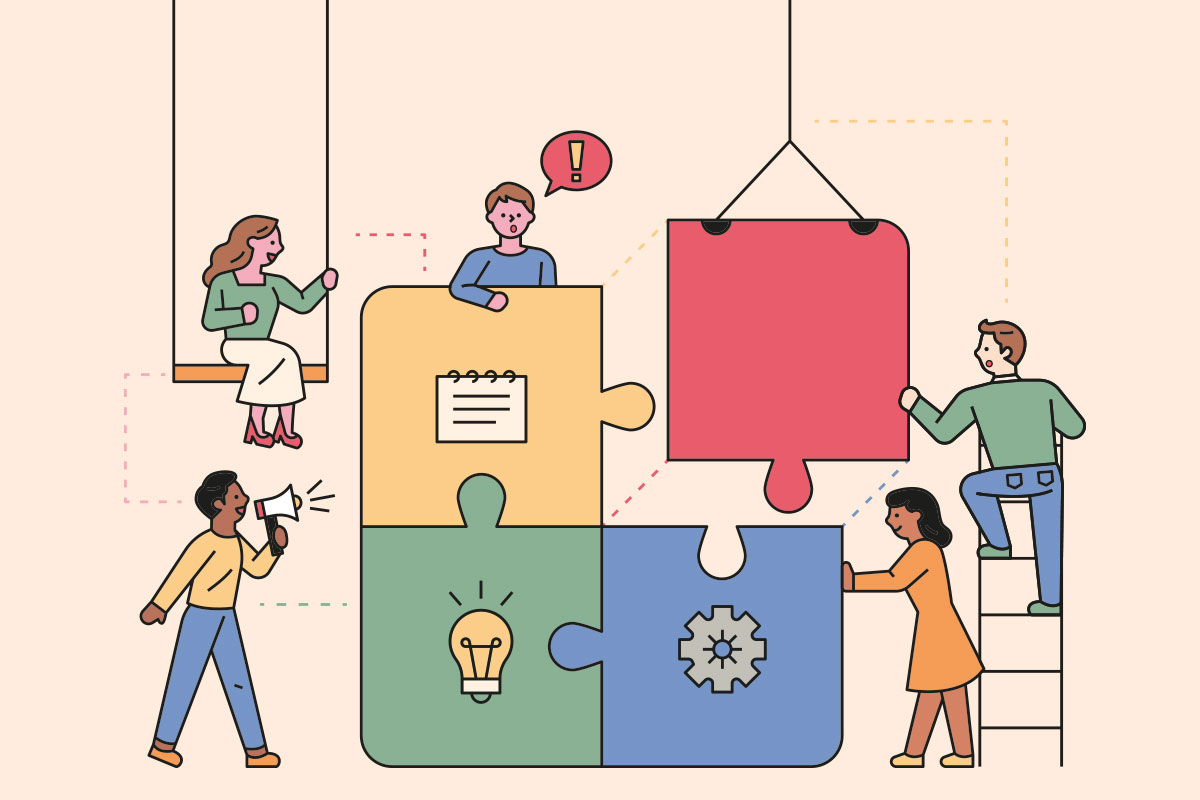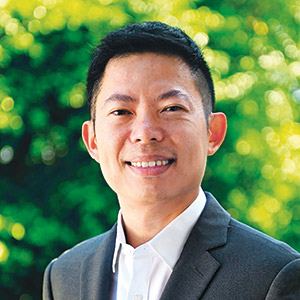The Jigsaw Puzzle Of Social Inclusion
It is said that the road to hell is paved with good intentions. Thus, efforts to create a society that promotes diversity need to be carefully thought out — or may end up doing more harm than good, argues Dr Justin Lee (Arts and Social Sciences ’99).

‘Inclusion’ has become a buzzword that lends a semblance of legitimacy to all sorts of social initiatives. Playgrounds, gyms and supermarkets have sometimes described themselves as inclusive, and usually this means that the infrastructure has been designed to be accessible to people with disabilities. At the workplace itself, companies with a ‘diversity and inclusion’ strategy commit themselves to making and implementing policies to ensure fair employment and the career development of minority groups. At a broader level, policymakers have touted ‘inclusive growth’ as an ideal for ensuring that low-income families and workers are not left behind because of economic forces.
However, what counts as proper or adequate inclusion? How can we tell whether we are doing inclusion right? Only when we can clearly articulate what counts as desired inclusion can our efforts be meaningfully guided. When such an ideal is ill-defined or absent, any effort can claim to be inclusive — or worse, we may not realise that our inclusion efforts have led to unexpected and even negative consequences despite good intentions.
Are we doing inclusion right?
It is easy to take a position of universal inclusion — that we should include as many groups as possible (women, people with disabilities, ethnic minorities, etc.), under as many circumstances and contexts (education, employment, and so on) whenever possible. For example, we proudly proclaim adherence to the principles of Universal Design — which advocates that products, buildings and environments should be made accessible and usable to the greatest extent possible by all people regardless of their age, ability or other factors — even when we actually harbour private doubts about their feasibility. Such a vision is certainly laudable, but the reality is that trade-offs often must be made, and often without proper consideration. Even within a specific domain, universal inclusion already faces real challenges. A person with disability once told me that a toilet cubicle made larger for a wheelchair user’s convenience may be more disorienting for a visually-impaired person, who will need to feel around a larger space for where the fixtures are.
Research has shown that policies or services that claim to be inclusive can be patronising or even oppressive. Scholars of disability issues like Paul Milner and Berni Kelly have explained how inclusion can be potentially oppressive in ways that may not be obvious to the non-disabled. For example, chaperoning people with disabilities to highly public spaces acts as simplistic evidence of community participation — as it may come at the expense of their comfort or choice. People with disabilities may feel that they are being put under the spotlight when they may prefer to avoid unwanted attention. Employers may hire not because they value the person with a disability, but use them as a marketing tool or to demonstrate how socially responsible their companies are.
Those at the ‘receiving end’ of inclusion efforts may also hold unrealistic ideals of what inclusion should be. Some argue that inclusion should occur as early as possible, wherever it is possible. For example, some think that the lack of integration of children in special schools with the mainstream leads to continual segregation later on in adult life and difficulty gaining employment in the future. The argument is for as much ‘mainstreaming’ as possible because any form of enclave is considered to be a kind of segregation. Exclusive settings or enclaves are only grudgingly accepted when the persons
with disability have very severe needs. These arguments seem to have adopted an ‘inclusion-at-all-costs’ approach that focuses on a single-minded determination to get people with disabilities to be treated equally with everyone else.
While much more can be done to accommodate people with disabilities, a sensibly inclusive social system is not one that simply seeks to include as much as possible, along all dimensions, across multiple contexts. In fact, inclusion — and on the flip side, exclusion — is part of the larger social mechanism of classifying, sorting and understanding people. If we were to say that more inclusion is better under all conditions, then we are simply removing our ability to exercise discretion, discernment and good judgment.
Having specialised services and space for people with disabilities can offer protection and security, although that protection can also entail the curbing of individual freedom or choice. Enclaves are problematic when they constrain the mobility of people in and out of them. However, if they allow people with disabilities to enter and leave, but also the non-disabled to do so, they can be a productive mode of inclusion. We should explore multiple models of inclusion to understand their viability and strengths.
![]()
If we were to say that more inclusion is better under all conditions, then we are removing our ability to exercise discretion, discernment and good judgment.
Something’s Got To Give
Inclusive initiatives, even if they do not make this explicit, always have some reference group that is the target of their efforts. Like it or not, policymakers will always be able to prioritise what group they would like to focus their inclusion on. This creates some discomfort for all involved. If we introduce quota hiring or anti-discrimination legislation, how do we decide on the protected groups that these laws will cover — women, people with disabilities, people facing mental health issues, people with alternative sexual orientations? All of the above, or some of the above, and why? Furthermore, the more inclusive we try to be, the more challenging it is to achieve social cohesion.
Emile Durkheim, one of the founding fathers of academic sociology, describes the solidarity emerging out of small communities which have shared values and life experiences. This creates a strong bond born out of sameness, which he calls ‘mechanical solidarity’. It is much harder to achieve ‘organic solidarity’, which is born out of difference and interdependence, where communities acknowledge and respect the value of diverse behaviours and beliefs.
However, the solidarity born out of diversity cannot occur without making space for conflict. For instance, in a study by the Singapore Children’s Society on how families communicate when fathers are imprisoned, social workers found that families tend to use visitations as opportunities for play or bonding instead of serious talk for working through conflict or interpersonal issues, which require more frequent and extensive dialogue. Visiting families find the allocated time too short, and so some decide to just use the visits for a more light-hearted encounter and focus on family bonding to keep visits enjoyable. However, this merely defers the problem and jeopardises the ability of families to work through their issues. Complex and fragile relationships must be successfully rebuilt, and resolving conflicts of the past and negotiating the future are important matters for the family to address.
OF Priorities and PACE
Given that the inclusion of various minority groups may sometimes threaten the existing social cohesion of the larger community, what should the sequence and pace of inclusion be? Some groups have made headway while others have not. Women’s issues — whatever one’s own assessment of their significance — have become a socially legitimate cause. The social inclusion of people with disabilities and mental health issues, however, has only more recently become regarded as deserving of national attention. But there are minorities such as the LGBTQ community whose inclusion is still hotly contested, much less the highly-marginalised minorities within already marginalised groups, like transsexual sex workers.
If we worry about ‘tearing apart the social fabric’, we will tend to move carefully and in small steps. Possibly, the sequence of such a strategy would mean focusing on the ‘obvious’ minorities first and moving to more ‘challenging’ groups later on. It seems understandable that a society might choose to build inclusion from the inside out, from the centre to the periphery. But the trade-off of such an approach is of course the pace of inclusion. Members of minority groups tell me that such a ‘sensible’ approach means that we might still be talking about the same issues 30 years down the road. For the mainstream, there is no urgency, but for those who are suffering because of social exclusion, the pace is never quick enough.
We tend to think of our lives as a race, where you compete with others to win. This metaphor fits well into the logic of organisational life and the market economy, and has insidious effects on what we value and how we behave. However, there are other ways to think and behave, by drawing from the logic of community. For example, if we think of life as a puzzle, then we would want to put all the pieces together. Social inclusion is like putting together a jigsaw puzzle whose parts are not prefabricated to fit one another. We will not feel that our social lives are complete until every piece fits into an overall picture. We need to commit ourselves to the idea that every group, however marginalised, would fit in somewhere.

A Senior Research Fellow at the Institute of Policy Studies, Dr Justin Lee is interested in issues related to disability, community development and social services. He is the creator of wiki.socialcollab.sg, a platform that allows citizen mapping of social needs, and co-founder of serve.sg, a volunteer matching platform. Dr Lee also chairs ArtsWok Collaborative, a non-profit organisation engaged in arts-based community development.